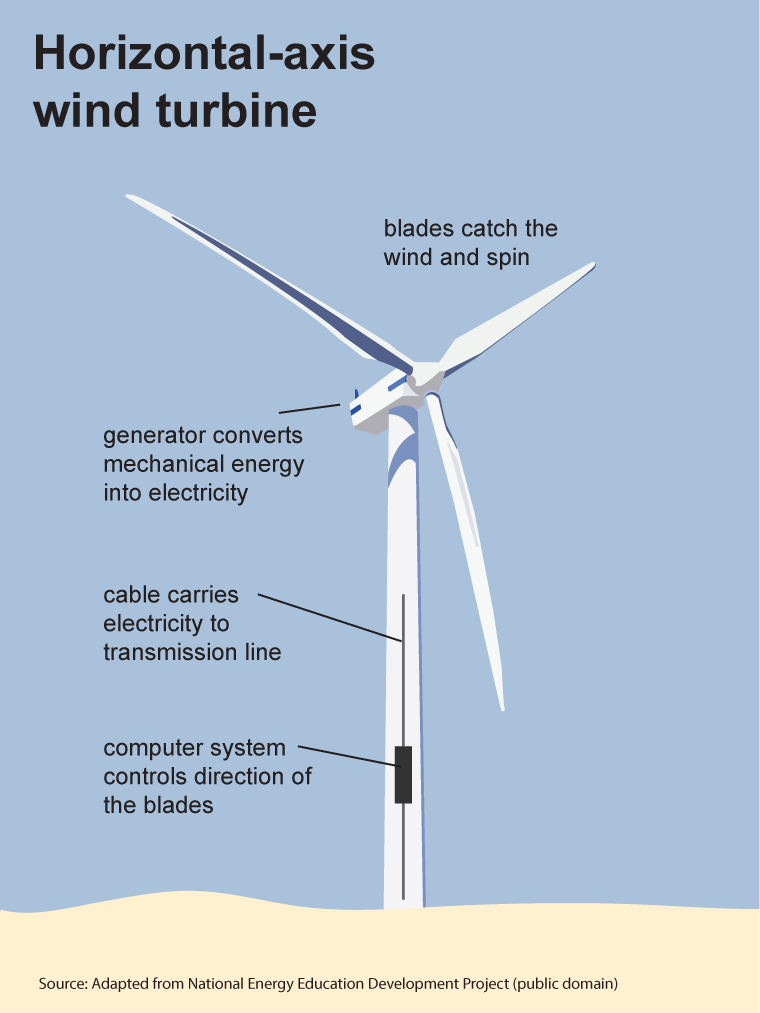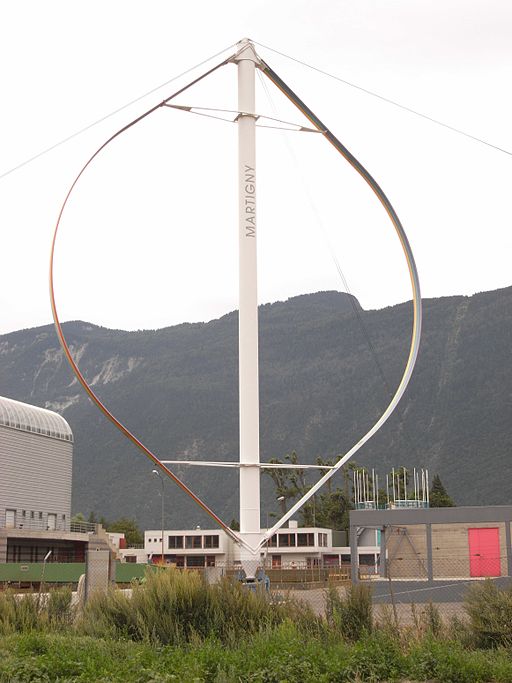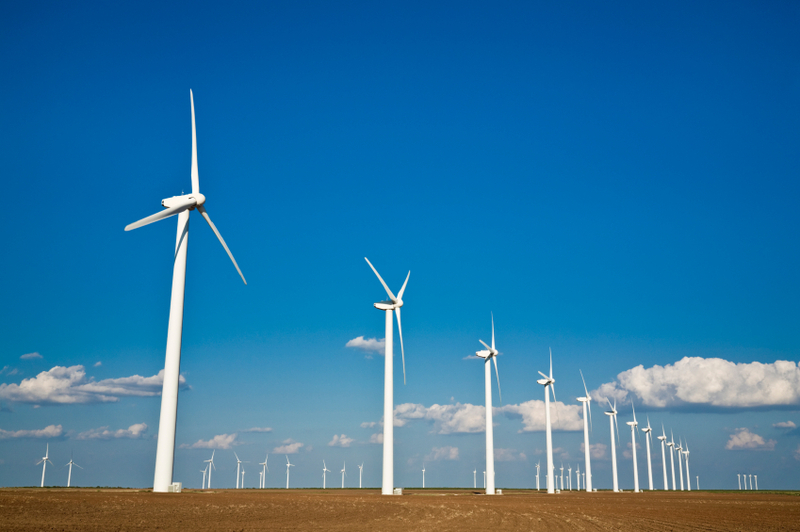There are two basic types of wind turbines:
- Horizontal-axis turbines
- Vertical-axis turbines
The size of wind turbines varies widely. The length of the blades is the biggest factor in determining the amount of electricity a wind turbine can generate. Small wind turbines that can power a single home may have an electric-generating capacity of 10 kilowatts (kW). The largest operating wind turbines have electric-generating capacity of about 15,000 kilowatts (15 megawatts). Larger turbines are in development. Wind turbines are often grouped together to create wind power plants, or wind farms, that provide electricity to electric-power grids.
Horizontal-axis turbines are similar to propeller airplane engines
Horizontal-axis turbines have blades like airplane propellers, and they commonly have three blades. The largest horizontal-axis turbines are as tall as 20-story buildings and have blades more than 100 feet long. Taller turbines with longer blades generate more electricity. Nearly all operating wind turbines are horizontal-axis turbines.
Vertical-axis turbines look like eggbeaters
Vertical-axis turbines have blades that are attached to the top and the bottom of a vertical rotor. The Darrieus wind turbine was named after the French engineer Georges Darrieus, who patented the design in 1931. The turbine looks like a giant, two-bladed eggbeater and is the most common type of vertical-axis turbine. Some versions of the vertical-axis turbine are 100 feet tall and 50 feet wide. Very few vertical-axis wind turbines are in use today because they do not perform as well as horizontal-axis turbines.
Wind power plants, or wind farms, produce electricity for electric power grids
Wind farms are clusters of wind turbines that produce large amounts of electricity. A wind farm usually has many turbines scattered over a large area. As of the end of 2022, the Highland Wind Project in Iowa had the most wind turbines—462 turbines—with a total nameplate generating capacity of about 502 megawatts (or 502,000 kilowatts). However, the Grand Prairie Wind energy project in Texas had the largest total nameplate capacity, at 1,027 MW (about 1 million kilowatts) and 365 wind turbines.
Last updated: December 27, 2023.



